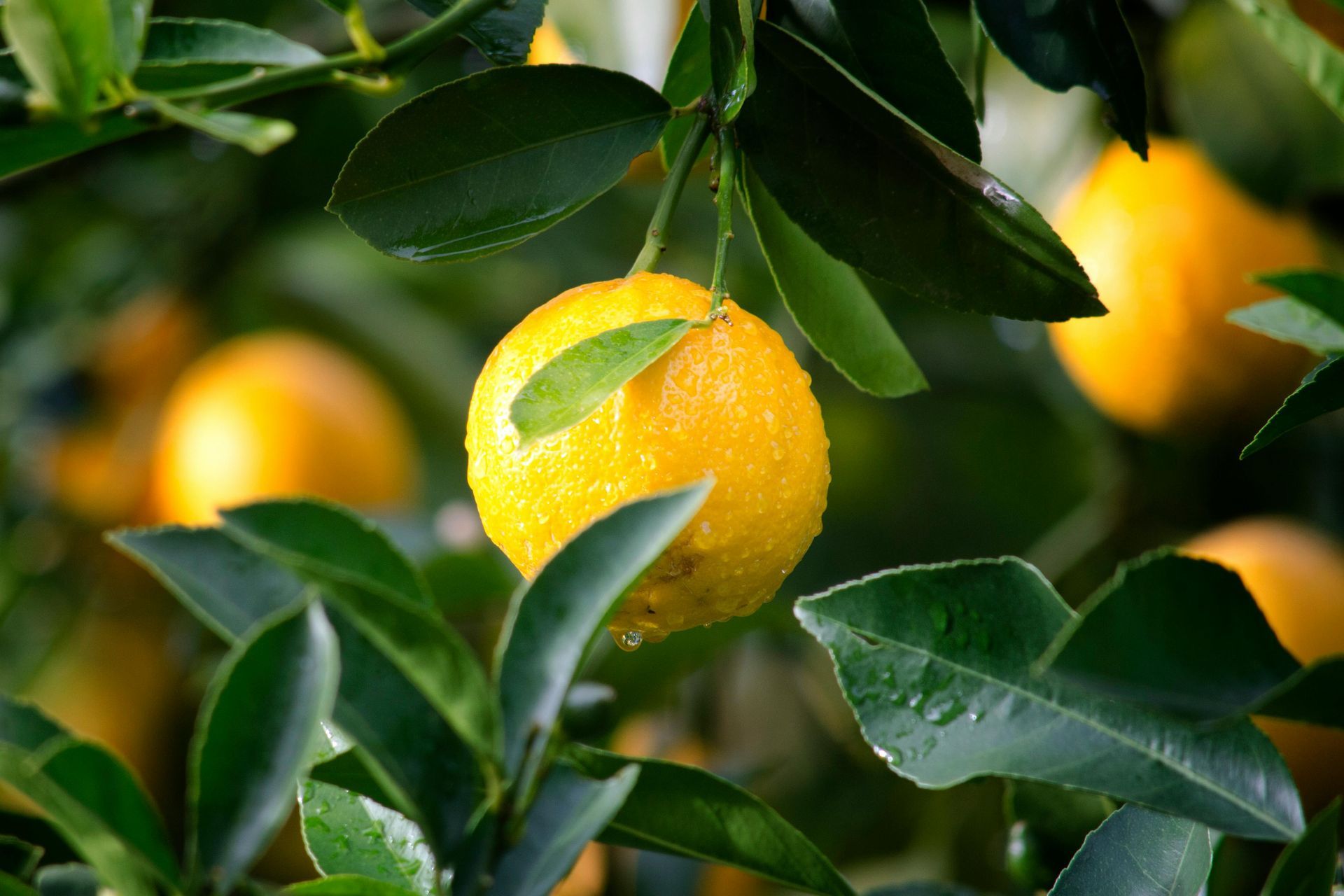By Grant Cool
•
December 17, 2025
The allure of walking into your backyard and plucking a ripe, juicy peach or crisp apple straight from the branch is a dream for many homeowners. Fruit trees add beauty, provide shade, and offer a delicious bounty that can feed your family. However, not every fruit tree is a benevolent addition to your landscape. Some species come with hidden costs—aggressive roots, messy drops, pest magnets, and structural risks—that can turn that sweet dream into a home maintenance nightmare. Choosing the right tree isn't just about taste; it’s about compatibility with your specific property. What thrives on a sprawling farm might be disastrous for a suburban lot in Aurora. At Aurora Tree Service, we believe that a healthy landscape starts with informed decisions. We help homeowners navigate the complex world of arboriculture, identifying which fruit trees might pose a threat to your home’s foundation, plumbing, and peace of mind. The Hidden Dangers of the Wrong Fruit Tree When you buy a sapling at a nursery, it’s easy to underestimate the powerful biological machine you are planting. Trees are living organisms with complex root systems and seasonal behaviors that can clash with the built environment. Here is why identifying and potentially avoiding certain fruit trees is critical for property protection. Aggressive Root Systems The most significant threat often lies beneath the soil. Many fruit trees, particularly those in the Ficus family (like figs) or certain citruses, have vigorous, invasive root systems. These roots are on a constant quest for water and nutrients. If planted too close to your home, they can wreak havoc on your foundation, cracking concrete and destabilizing structures. Even worse is the threat to your plumbing. Older clay pipes or even modern PVC with tiny fissures can attract roots. Once a root finds a moisture source inside a pipe, it grows rapidly, causing severe blockages and expensive plumbing emergencies. The "Messy Tree" Syndrome Some fruit trees are prolific producers—sometimes too prolific. Trees like mulberries or certain types of ornamental plums can drop thousands of fruits in a short window. If these aren't harvested immediately, they fall to the ground, rot, and ferment. This creates a sticky, slippery hazard on walkways and driveways. The rotting fruit stains concrete and pavers, ruins the aesthetics of your lawn, and can even damage the paint on cars parked underneath. The cleanup required for these high-maintenance trees can quickly become a part-time job. Pests and Wildlife Attraction A tree laden with sweet fruit is a dinner bell for local wildlife. While seeing a bird or two is charming, certain trees can attract swarms of wasps, hornets, and flies that make your backyard uninhabitable during peak season. Furthermore, unharvested fruit can draw in rodents, raccoons, and other larger pests that you definitely don't want nesting near your home's crawl spaces or attics. Problematic Fruit Trees Common in Landscapes While every tree has its place, some require significantly more space and distance from structures than the average residential lot can provide. Here are a few common offenders that Aurora Tree Service often advises clients to plant with extreme caution—or avoid altogether near the home. 1. The Fig Tree (Ficus carica) Figs are delicious, but the trees are notorious for their extensive and invasive root systems. In their native habitats, they search far and wide for water. In a suburban yard, this means they will aggressively target sewer lines, septic tanks, and pool foundations. They also have a wide canopy that can crowd out other plants and drop sticky sap. 2. Mulberries (Morus) Mulberry trees are tough and fast-growing, but they are messy. The dark berries stain everything they touch—sidewalks, patios, clothes, and cars. Additionally, their shallow roots can lift sidewalks and driveways, creating tripping hazards and costly concrete repairs. They also produce a significant amount of pollen, which can be a nightmare for allergy sufferers. 3. Sweet Gum (Liquidambar styraciflua) While sometimes planted for shade, the "fruit" of the Sweet Gum is a hard, spiky ball that is a menace to lawnmowers and bare feet. These "gumballs" cover the ground in the fall, making yard maintenance difficult and walking hazardous. 4. Ornamental Cherry and Crabapple While beautiful in bloom, some varieties are highly susceptible to diseases like blight and rust, which can spread to other plants in your garden. If not properly maintained, the dropping fruit can attract yellow jackets and rodents right to your doorstep. How Aurora Tree Service Protects Your Property You don't have to give up on your orchard dreams; you just need the right strategy. Aurora Tree Service provides the expertise to help you balance your desire for fresh fruit with the need to protect your biggest investment—your home. Comprehensive Site Assessment Before you plant, our certified arborists can conduct a thorough site assessment. We look at soil quality, drainage, and available sunlight, but we also map out your "hardscape." We identify the location of underground utilities, foundations, driveways, and septic fields. Using this data, we can calculate the safe planting distance for various species, ensuring that the tree you choose today won't be the one cracking your pipes ten years from now. Species Selection Advice We know which varieties thrive in Aurora's climate without becoming invasive. For example, if you love figs, we might recommend a dwarf variety suitable for a large container rather than a full-sized tree in the ground. If you want apples, we can suggest semi-dwarf rootstocks that are easier to manage and have less aggressive root systems. We help you choose trees that fit the scale of your yard. Maintenance and Mitigation If you already have a problematic fruit tree on your property, we can help you manage it. Root Pruning and Barriers: In some cases, we can install physical root barriers to direct growth away from foundations and pipes. Crown Reduction: Professional pruning can reduce the weight of the canopy and limit fruit production to a manageable level, reducing the mess on the ground. Tree Removal and Replacement: Sometimes, the wrong tree is simply in the wrong place. If a tree poses an immediate threat to your home’s structure, we can safely remove it and help you plant a safer, more suitable replacement that will provide years of enjoyment without the risk. Smart Landscaping Starts Here A fruit tree should be a joy, not a liability. By understanding the characteristics of different species and planning carefully, you can enjoy a bountiful harvest without sacrificing your property's integrity. At Aurora Tree Service, we are passionate about trees, but we are even more passionate about safe, sustainable landscapes. Whether you are planning a new orchard or worried about an old tree encroaching on your house, our team is here to provide the honest, expert advice you need. Concerned about a tree on your property or ready to plant new ones? Contact Aurora Tree Service today for a consultation and ensure your landscape remains safe and beautiful! Meta Information Meta Title: Fruit Trees to Avoid Near Your Home | Aurora Tree Service Meta Description: Not all fruit trees are safe for your yard. Learn which species damage foundations and pipes, and how Aurora Tree Service helps you plant smarter.



